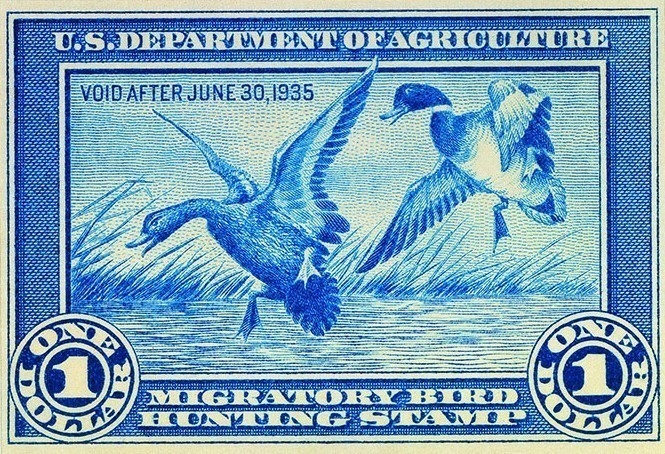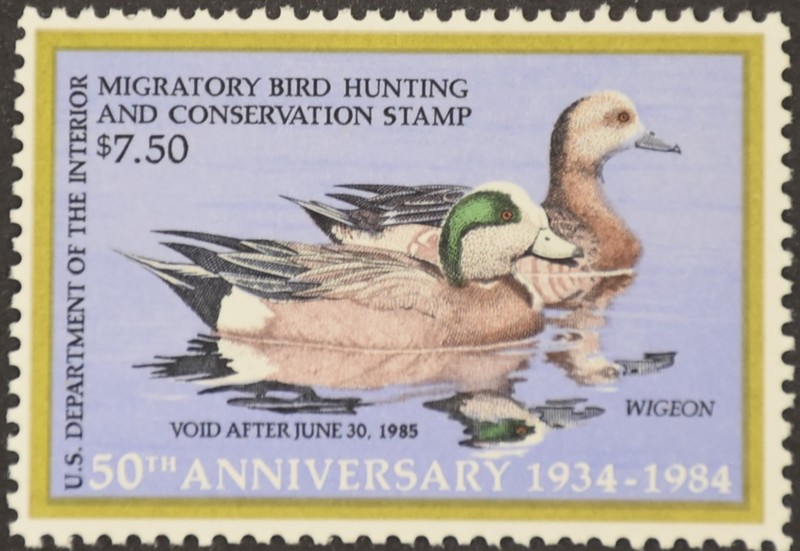Federal Duck Stamps
In the early 20th century, the U.S. enacted several laws limiting the hunting of migratory birds, including waterfowl such as ducks, as many species were in decline. This included the 1918 Migratory Bird Treaty Act, which made it unlawful to kill migratory birds without a waiver.
Hunting wasn’t the only problem for birds, however. Habitat loss played a significant part in the devastation of migratory waterfowl populations, so the federal government sought ways to purchase and maintain wetlands and other waterfowl-friendly habitat. Nationally known political cartoonist, avid hunter, and environmentalist J.N. “Ding” Darling developed an ingenious idea: create special stamps hunters would purchase to obtain hunting licenses and use the funds to conserve wetlands!
In 1934 the Migratory Bird Hunting Stamp Act was passed by Congress, requiring hunters over the age of 16 to purchase and carry a federal duck stamp, and Ding Darling created the first stamp image.
Since 1949, a national contest has been held to create art for the annual stamp, and stamps have become highly collectable, with many sportsmen and birders alike buying multiple stamps each year. Additionally, federal duck stamps can now be used for free entry into any U.S. national wildlife refuge that charges for admission.
The duck stamp is a testament to the relationship between hunting and conservation – which is evident throughout the Eastern Shore in areas such as the Blackwater and Chincoteague National Wildlife Refuges that directly benefit from the program.


